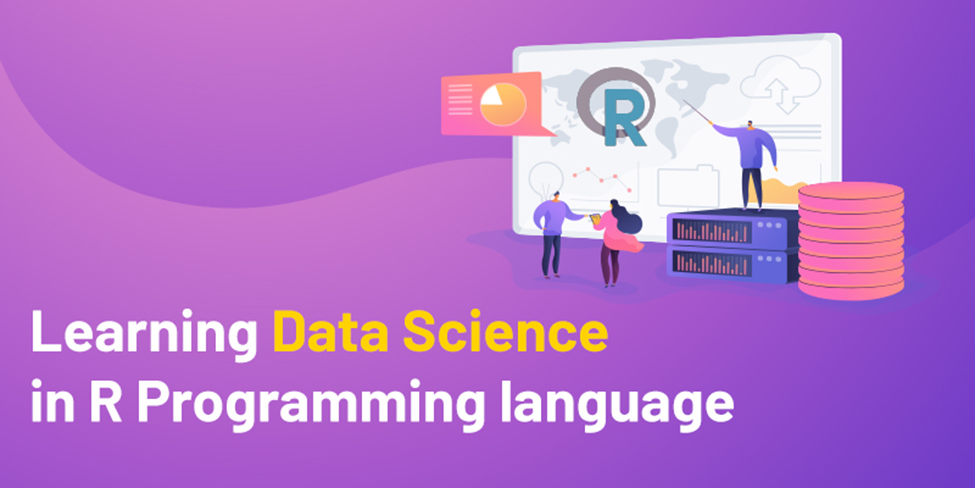
With the advancements in modern computing, the number of internet users has skyrocketed creating a huge description in the market. Today, petabytes of data are collected, stored, and analyzed by various companies like streaming services, networking applications, research institutes, marketing agencies, E-commerce, and more. These companies for analyzing the data and putting it to some use require data scientists with proper skill sets and knowledge of advanced data science concepts.
Your potential to process and extract valuable information by crunching raw datasets will make you stand out from the crowd and increase your chances to flourish your career in this popular industry. You can further enhance your skills through various Data Science Certification and projects with real-world applications.
Data science is a multidisciplinary field, which means you have to be good at multiple things like programming, mathematics, database management, cloud computing, statistics, etc. in programming, there are two most famous languages for data science, Python and R. In this blog, we’ll be discussing R programming languages, how it’s different from python, and what benefits it provides to data scientists.
What is R?
R is an open-source programming language that is mainly used for mathematical calculations, statistical analysis, and data visualization in data science. It features extensive communication libraries and packages that enable data analysts to data analyze and convert the available information into graphical form. It’s a platform-independent language and comes with a variety of packages specially designed for data analysis and visualization
R breaks down complex tasks into small procedures so that the developer can easily program and build data models. Moreover, R has a huge community of developers and data scientists ready to help the users and share valuable information from all around the world. You can easily learn the language as there are many R Tutorial and open-source projects on the internet you can work on.
Python vs R programming language for Data Science
Below are the key points that help you understand the difference between Python and R:
| Python | R |
| Python is mainly used for building and deploying data analytics models. | R is mainly used for statistical analysis and data visualization. |
| Best for the projects that need to be built from scratch. | R features many libraries used extensively for data science applications. |
| Python has a smooth and learning curve. | The learning curve for R is pretty steep. |
| Can easily be integrated into different applications that improve portability. | R can only be integrated locally, thus building APIs is not possible. |
| Designed to be mainly used by developers and programmers. | Specially designed for researchers, data scientists, and scholars. |
| Some of the popular Python libraries for data science are TensorFlow, sci-kit learn, pandas, Keras, NumPy, scipy, caret, etc. | R packages for data science include ggplot2, mlr3, Knitr, dplyr, tidyverse, shiny, and XGBoost. |
Benefits of Using R for Data Science
R provides several benefits, especially if you’re using it for data science. Some of them are listed below:
- Easy to learn
R is not easier to learn as compared to python, but it’s much easier to learn as compared to other Data Science programs like Stata and Scala. With package collections like tidyverse, the developer Hadley Wickman made R much easier to learn and work with.
- Connectivity
R provides packages like Kaggle and Xgboost that enable you to create machine learning models and deploy them on various platforms. Programs developed in c++, java, python, javascript, etc can be integrated with RStudio where you can add multiple data science and machine learning features. R can also be connected with databases like Hadoop, SQL Server, and spark, which enhances data connectivity and reduces the complexity of your models.
- Opensource
As mentioned earlier, R is an open-source programming language and can be used by anyone around the world. This results in the data scientists and developers can add more functionality, create libraries and packages based on the market requirements. Also, it becomes easier for people to work on the projects and add them on platforms like GitHub. This one feature of R language would greatly improve your learning curve as you get huge community support and open-source projects to work on.
- High-performance
For any business or individual, getting high performance and accurate results while saving time and money is a number-one priority. Programs written in R languages promote readability, usability, and require less computational power to produce accurate results.
- Popularity
Although python is enrolled in one of the top 5 programming languages, R is a more niche programming language when it comes to data transformation and data analytics. The majority of data scientists in various organizations use R as their primary language for data science applications. Big data science projects in any organization are likely based on R. Therefore, you’ll have more opportunities for your career as a data scientist if you learn the R language.
Final Thoughts
Although python and R are both considered to be equally important for candidates naive to data science, learning R will expand your knowledge in both programming and statistics. There are many resources available to help you learn the basics and strengthen your skills in data science. R is a niche programming language and sooner or later, you’ve to learn it to advance your career as a data scientist.
Learn more from development & how to get a file extension in Python?